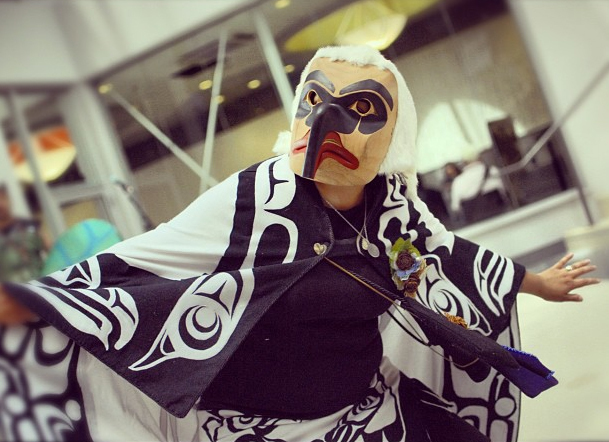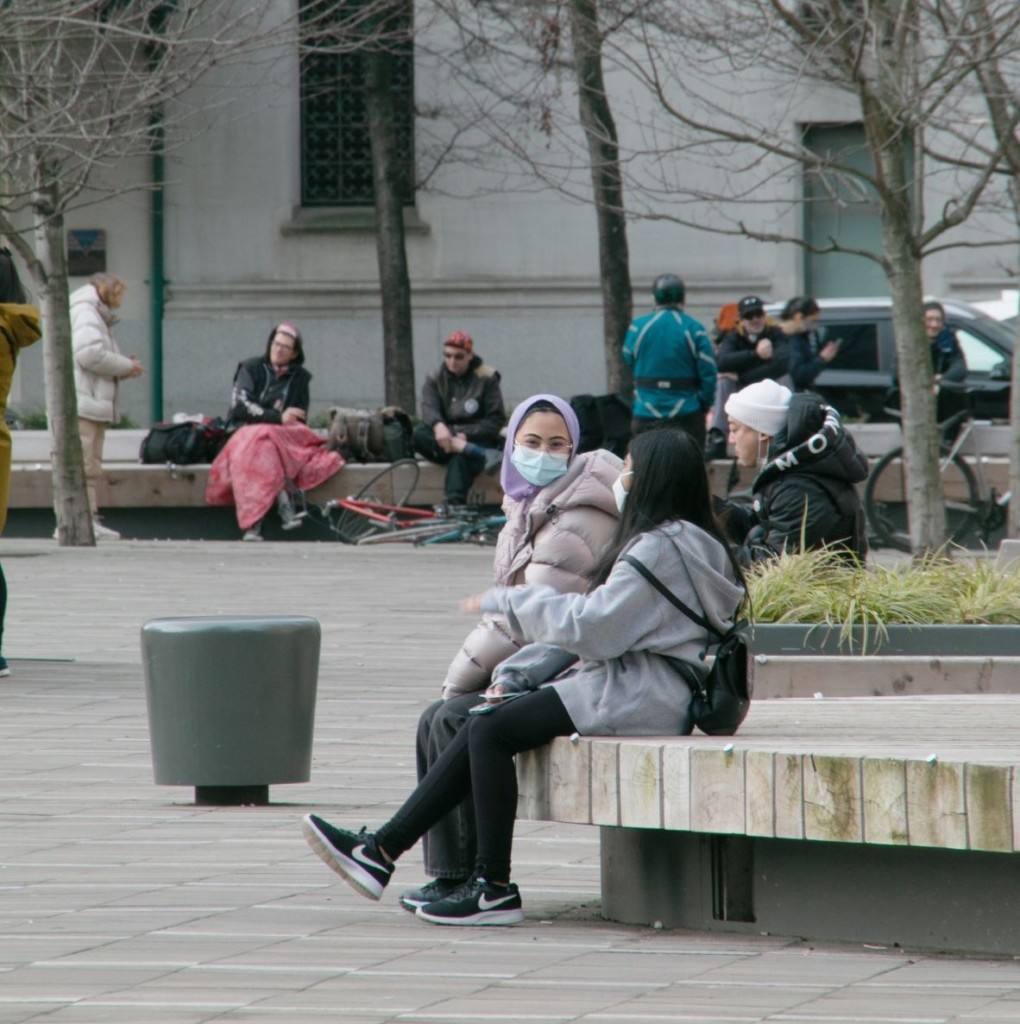June 21 and 22 marked with song, dance, and struggles
By Dylan Hackett, News Editor
Both Douglas College campuses marked Canada’s 17th National Aboriginal Day with ceremony, dance performed by the Git Hayetsk group, bannock (a fried flatbread) cooking workshops, and a variety of booths set up to inform students and attendees of the realities faced in the lives of aboriginal peoples.
“Douglas College celebrates the fact that we live in a historic place where First Nations people have gathered for centuries,” said Blaine Jensen, Vice President of Educational Services. “The New Westminster Campus is on the traditional territory of the Qayqayt Nation: Qayqayt means resting place. The David Lam Campus is on the lands of the Kwikwetlem First Nation. The celebrations that Douglas College hosted on June 21 and 22 honour the First Nations and help us all learn to appreciate the tradition and culture of the first peoples of our region.”
“We had a variety of presentations spanning from aboriginal education in a post-secondary context to local spirituality in regards to plant life and how different nations in the BC area use different plants and trees,” said Madison Paradis-Woodman, DSU Aboriginal Liaison and student assistant to the Aboriginal Day event. “I also did the presentation on aboriginal issues and themes in post-secondary education.”
Aboriginal post-secondary students are often purported to have their education paid for by the government, a myth that Paradis-Woodman was set to address in full.
“The whole notion that aboriginal people in Canada get free education is an umbrella of myths. That’s not the case,” explained Paradis-Woodman. “What happens is that money is distributed through what the government calls the Post-Secondary Student Support Program, or PSSSP for short. [The money] is funnelled out to all the different bands in Canada and that is used for educational purposes. For instance, that doesn’t necessarily mean it’s used for post-secondary education. It could be used for trades, high schools. The funding is given to your band and this proposes a problem for Métis and non-status aboriginal students. Automatically, this poses a problem. Those two demographics are completely exempt from this program.”
According to the Canadian Federation of Students, the two per cent annual increase cap imposed during the Chretien years has been a major barrier for the funding of PSSSP due to annual inflation being beyond two per cent. The CCF believes that this violates the constitutional right for aboriginal peoples to have access to education at all levels.
“In a 2004 report of the Auditor General, lack of federal funding was cited as the cause of preventing approximately 9,500 First Nations people from pursuing a post-secondary education in 2000. Between 2001 and 2006, the Assembly of First Nations estimates that 10,588 status First Nations students were denied funding from the PSSSP, and an additional 2,858 more were denied in 2007-2008 alone,” stated the CFS website.


